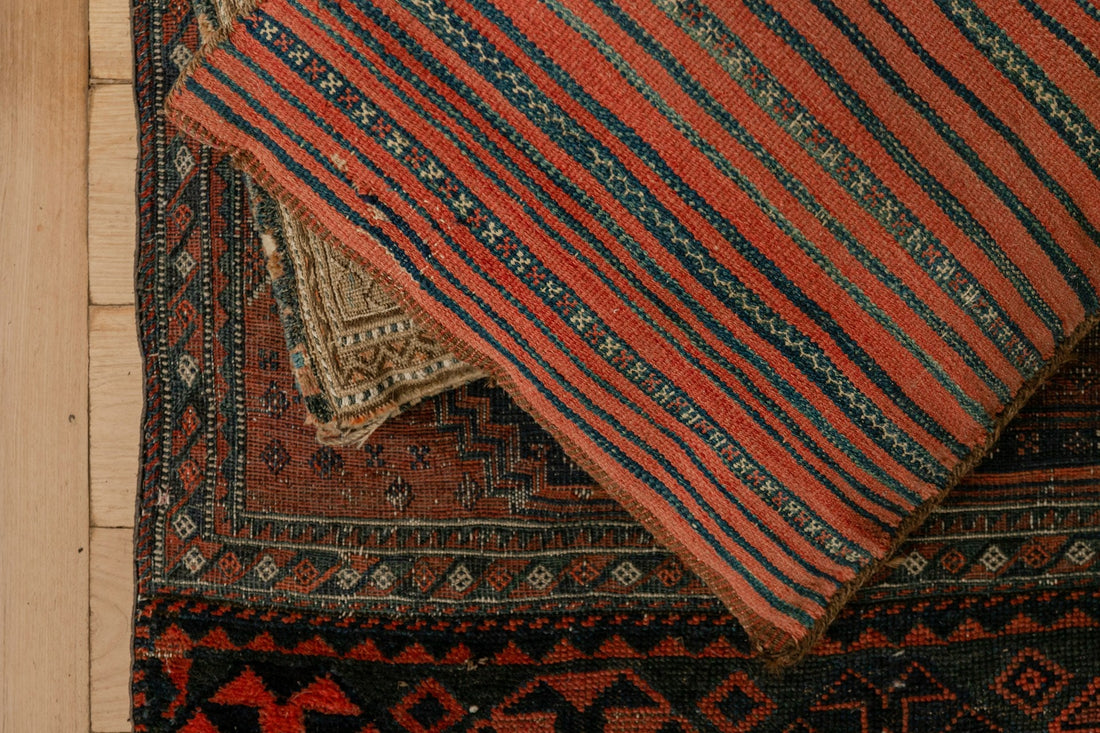Color bleeding in American runner rugs is one of those things that can sneak up on you. One day your rug looks great, and the next, you notice the reds blending into the cream or the darker tones spreading into the lighter ones. It doesn’t take a major accident for this to happen. Sometimes it’s a slow fade caused by everyday habits like cleaning with the wrong solution or letting too much sunlight hit the same area over and over again.
The problem isn't just about looks. Once colors start running, the structure of the rug may weaken too. And when the dye mix spreads unevenly, it can ruin intricate patterns and make the piece look worn and patchy even if it’s fairly new. That kind of damage is usually tough to reverse, which is why knowing how to prevent it from happening in the first place can make a real difference in how long your rug keeps its color and charm.
Understanding Color Bleeding In Rugs
Color bleeding happens when the dyes used in a rug begin to loosen and shift because of moisture, heat, or even improper cleaning. This often shows up as blurry lines, expanded dark spots, or colors migrating into surrounding areas where they were never meant to be. American runner rugs, especially those with bold or contrasting patterns, tend to show these signs quickly when bleeding starts.
A few common things can trigger this:
- Over-wetting during cleaning, especially if the water is too hot or lingers on the surface too long
- Using cleaning products that contain bleach or harsh chemicals
- Storing rugs in damp or humid areas like garages or basements
- Prolonged exposure to direct sunlight that breaks down color bonds
- Accidental spills that aren’t cleaned up properly or quickly
If you’ve ever washed a rug and returned later to find some of the pinks creeping into the whites, you’ve seen bleeding in action. It can sneak in fast after a summer storm rolls through Frisco, especially when shoes track in wetness or HVAC systems can’t keep moisture levels low enough inside.
Catching the issue early can prevent the damage from spreading. If you notice wet areas or see dye transfer when blotting a spot, it’s time to act quickly. The longer the moisture stays in those fibers, the more likely the dyes will loosen and settle in the wrong places.
Proper Cleaning Techniques To Prevent Color Bleeding
Cleaning your rug the wrong way is one of the most common causes of bleeding. But when done right, it can keep colors locked in and help your rug look sharp for years. The key is knowing what products to use, how to apply them, and where to test before moving forward.
Here’s a cleaning method that helps prevent color bleeding:
1. Do a colorfast test before anything else
Pick a hidden corner or the back side of the rug. Dab it with a damp white cloth using just a little water. If the cloth picks up color, that dye is likely to bleed and needs special care.
2. Use cold or room-temperature water
Hot water can open up fibers and allow the dye to move around. Keep the temperature low and don’t soak the rug.
3. Blot, don’t scrub
Use a clean, soft cloth to blot spills or damp spots. Rubbing can twist the fibers and shift colors.
4. Avoid steam cleaners and harsh detergents
Stick with mild, pH-balanced cleaners made for wool or cotton, depending on the rug’s material. Look for something that’s safe for use on color-sensitive fabrics.
5. Dry the rug flat and evenly
Leave it in a shaded spot indoors or use air movers to help dry it quickly. Make sure both sides of the rug can breathe to avoid trapped moisture.
Taking this kind of care during cleaning protects the look of your runner and helps it last longer. Even small daily habits like shaking off loose dirt outside instead of vacuuming every time can reduce how often you need deeper cleaning, which lowers the risk of bleeding altogether.
Safe Storage Practices For American Runner Rugs
How you store an American runner rug matters just as much as how you clean it. When a rug sits untouched for a season or more, even small environmental issues can lead to color bleeding or fading. A closet stuffed with damp coats or a window well that traps humidity might not seem like a big deal, but those conditions can quietly ruin deep dyes and delicate weaving.
Start with one simple rule: clean the rug before storing it. Any dirt or moisture left behind can break down dye over time. Even if it’s just been lightly used, give it a good shake or consider a professional cleaning depending on the season and how much foot traffic it’s seen.
Here are a few basic tips for smart storage:
- Roll, don’t fold. Rolling the rug helps keep the fibers intact and prevents creases that could hold moisture or trap dust.
- Wrap it in breathable fabric like cotton or muslin to protect it from sunlight without locking in moisture. Avoid plastic wraps, especially in warmer climates like Frisco where things heat up quickly and raise mildew risks.
- Store the rug in a cool, dry place. Think of closets that stay dark or storage rooms with good airflow. Avoid attics, garages, or any spot where extreme temperatures or humidity spikes can occur.
- Keep it off the floor. Whether it’s a concrete slab or hardwood, floors can attract dampness. Use shelves, pallets, or storage boxes to lift it up.
Also, if your rug is stored near windows, make sure there’s no direct sunlight hitting any part of it. Even a little exposure over time can cause bleaching or uneven fading across the rolled area, especially for bright reds, blues, or blacks.
What To Do After an Accidental Spill
Spills on runner rugs happen. Whether it’s juice, coffee, or muddy water, quick and careful action can stop a small accident from turning into deep color damage. Instead of panicking or grabbing a random cleaning product, follow a few simple steps right away.
1. Blot the spill right away using a clean white cloth. Press down to soak up as much liquid as possible. Never rub. The goal is to pull the moisture out, not spread it.
2. Work from the edges toward the center of the spill. This keeps the liquid from spreading and dragging dye further than the original spot.
3. Use room-temperature water to dampen a clean cloth and blot again. Cold water helps, but avoid both ice-cold and hot water. Either can make the bleeding worse.
4. Switch to a new cloth if the old one gets too wet or starts to pick up color. Using a dry section gives you better results and avoids pushing the stain deeper.
5. Dry the rug completely. Use fans, dehumidifiers, or open windows to speed up the dry time. Make sure both the front and back get proper airflow. Dampness trapped underneath is one of the leading causes of delayed bleeding.
If the stain still shows or dye transfer appears on your cloth, that’s the time to reach out to a professional. Waiting or experimenting with store-bought sprays often makes it worse and can leave lasting damage.
Keeping American Runner Rug Colors Bright And Clear
Taking care of American runner rugs doesn’t have to be complicated. It mostly comes down to treating them gently and acting quickly when anything goes wrong. Smart cleaning with the right products, proper storage, and handling spills the right way go a long way in keeping colors sharp and vibrant.
Even one bad habit like using hot water or leaving the rug exposed to direct sunlight for weeks can cause bleeding and long-term wear. But by testing your cleaner on a hidden part first, staying mindful of where you place your rug, and storing it dry and cool when not in use, you give your rug its best chance at staying beautiful.
American runner rugs bring life to homes all over Frisco, giving hallways, entries, and other narrow areas a sense of warmth and style. Protecting that color isn’t just about cleaning—it’s about care. A little attention now saves you trouble down the road and lets your rug stay in the spotlight for years.
If you’re looking to add comfort and style to your hallway or entryway, explore our selection of American runner rugs to find a piece that suits your space. At RugTown, we’re here to help you keep your rugs in great shape while making your Frisco home feel even more inviting.

